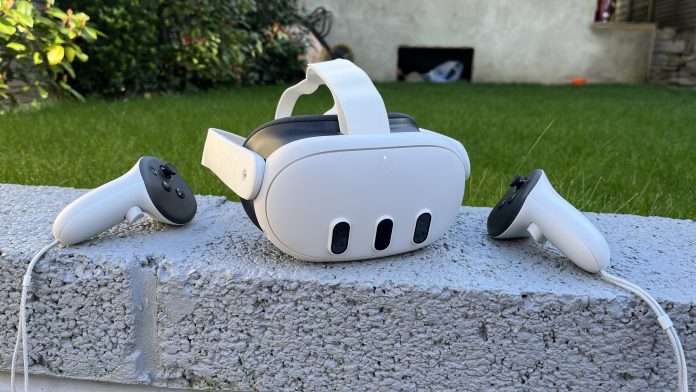
The Meta Quest 3 is a shining example of a standalone VR headset done right, and its mixed reality capabilities are much more affordable than the Apple Vision Pro – and it puts the Meta Quest Pro to shame.
From its higher-resolution display with pancake lenses to its more powerful processor, the Quest 3 ups the ante compared to the previously favoured entry into VR, the Quest 2. That’s not all, as bringing a touch of MR/AR content with its impressive colour pass-through camera makes it a more viable headset to move around in.
With the Quest 3, Meta has fine-tuned the flaws that come with the first iterations of a product. It still has shortcomings, from its short battery life to its lack of eye tracking, and sometimes its performance can’t quite keep up with large-scale games. But these minor nuisances fade into the background when you put on the headset.
Is the Meta Quest 3 worth getting? With other VR and AR headsets making a big entrance, like the PlayStation VR2 and Apple Vision Pro, it can be a tricky question. However, the Meta Quest 3 is, without a doubt, the best VR headset you can get for the price, and you can find out why below.
Pros
- Comfortable, compact design
- Improved performance
- Higher-resolution display
- Suite of in-store games and apps
Cons
- Short battery life
- No eye tracking
- Shallow MR/AR content
Meta Quest 3 Price
The Meta Quest 3 is priced from $499 / £479 / NZD$929 with 128GB of storage and $649 / £619 / NZD$1,199 for 512GB of storage. That’s quite the step up from the Quest 2, now priced from $299 / £249 / NZD$899.
While the price increase is a shame, the Quest 3 delivers better specs and pass-through tech for AR.
Compared to other VR headsets on the market, including the $549 / £529 / NZD$999 PlayStation VR2 that requires a similarly priced PS5 to play and the eye-watering $3,499 Apple Vision Pro, the Meta Quest 3 is the most affordable way to get a premium VR experience.
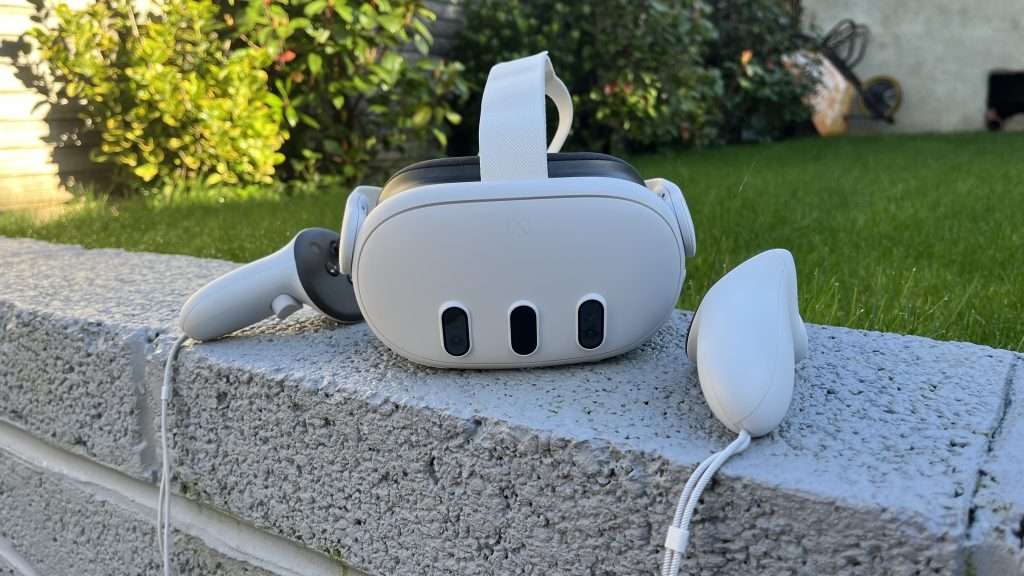
This is thanks to the Quest 3 being a standalone headset, meaning you don’t need a high-spec PC or console in order to use it. With this in mind, the Pico 4 VR headset is its greatest competitor, starting at around $425 / £339 / NZD$640. While slightly cheaper, Pico 4 users miss out on a 120Hz refresh rate, AR/MR features, and a more powerful chipset.
Even compared to the $999 / £999 / NZD$2,699 Meta Quest Pro, the Quest 3 offers better specs and display without eye tracking. For one of the best ways to get into VR or AR at a fair price, the Meta Quest 3 is your top choice.
Here’s a brief summary of he specs you can expect.
| Meta Quest 3 | Meta Quest 2 | |
| Price | From $499 / £479 / NZD$929 | From $299 / £249 / NZD$899 |
| Processor | Qualcomm Snapdragon XR2 Gen 2 | Qualcomm Snapdragon XR2 Gen 1 |
| RAM | 8GB | 6GB |
| Storage | 128GB / 512GB | 128GB / 256GB |
| Display | 2064 x 2208 pixels per eye | 1832 x 1920 per eye |
| Weight | 515g | 500g |
| Battery life | up to 3 hours | Up to 2.5 hours |
| Mixed reality | Full colour pass-through | Limited black and white pass-through |
Meta Quest 3 Design and Comfort
Even though it shares a similar design, Meta forgoes the more boxy and bulky look of the Quest 2 for a more compact and rounded design on the Quest 3, and it’s a look that works.
The redesign brings a slimmer profile that feels more accustomed to your head. The headset now has a 2.2-inch depth as opposed to the Quest 2’s 2.6 inches, and that’s thanks to the updated pancake lenses. When wearing it, I didn’t feel the weight distribution on my face as much as wearing the Quest 2.
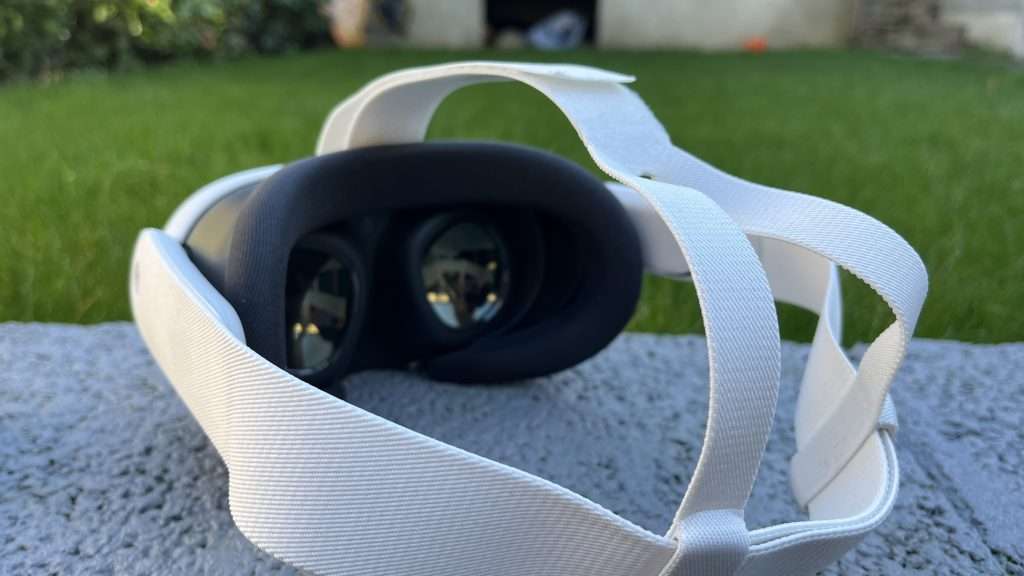
That says a lot for its design, as the Quest 3 (515g) is slightly heavier than the Quest 2 (500g). Despite the weight increase, it was comfortable to wear over long periods. It was easy to get the right fit, too, as the three-point elastic adjustable strap with a Y shape lets you easily loosen or tighten the fit.
The facial interface comes with fabric-like cushioning, which comfortably sat on my face without any irritation. If you get your sweat on, this isn’t ideal, but you can opt for the silicone facial interface for an extra $39 / £39, which I imagine is more comfortable and easier to clean.
The face of the Quest 3 has three inserts, with the outer two housing two cameras for spatial tracking and AR and two RGB cameras with 18 PPD for pass-through. According to Meta, that’s 10 times the resolution of Quest 2 and three times the resolution of Quest Pro in pass-through. The middle insert has an infrared emitter.
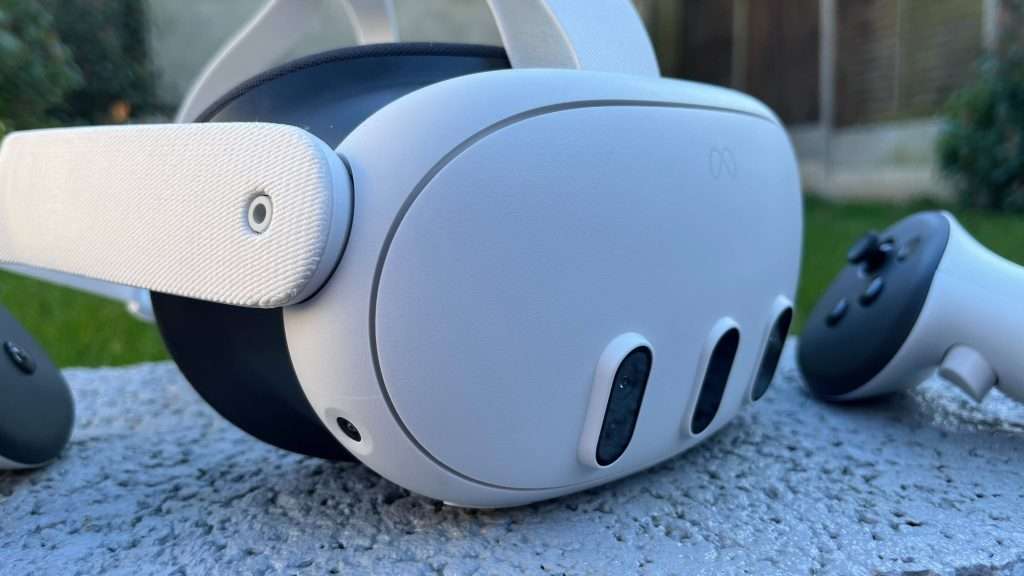
Along the bottom, there are two more spatial-tracking cameras (for good measure), volume buttons, and a pupillary distance (PD) adjustment dial. That last one beats Quest 2’s three-point lens adjustment system, as I could precisely get the width between my eyes that wouldn’t give me motion sickness while playing. You’ll also find a three-pin connection for the $129 / £129 charging dock, which is not included.
On the right, there’s a handy 3.5mm headphone jack placed in the hinge for better audio (for on that later). Finally, the left holds a USB-C port on the hinge for charging and tethering to a PC for PC VR and the power button just below.
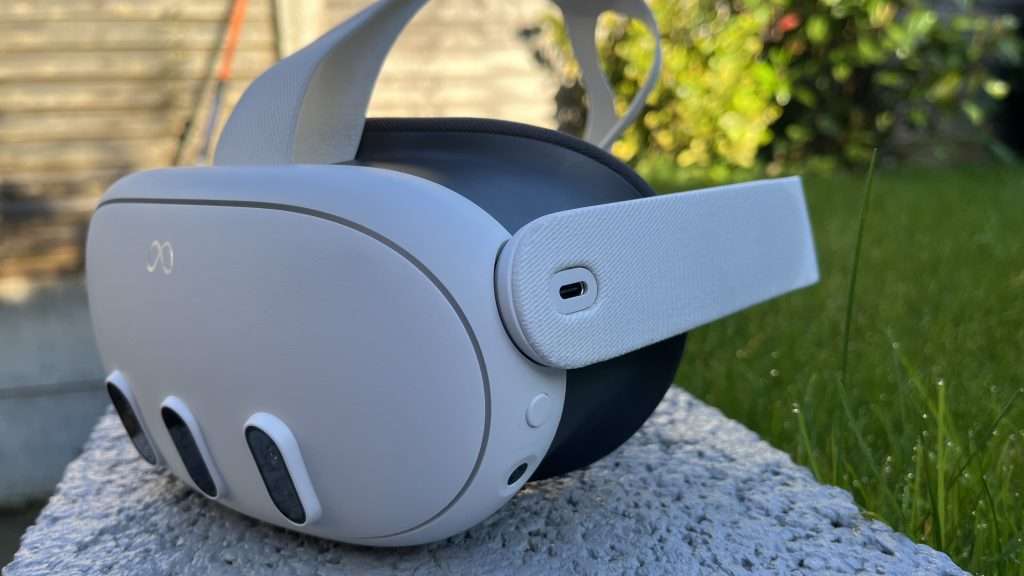
All this makes for an impressively comfortable fit, as the headset sat securely on my head for hours while I was locking swords with fiends in Asgard’s Wrath 2 or pistol-whipping foes in, well, Pistol Whip. Like the Quest 2, there’s still a gap between the headset and my nose where light comes in, meaning I wasn’t fully immersed, but it’s hardly a deal breaker.
I’ve heard of users having issues with the headband strap and their hair getting in the way, but I couldn’t find any problems (no hair here).
Meta Quest 3 Controllers
The Quest 3’s new Touch Plus controllers stay largely the same as the Quest 2’s, but this time, they don’t have tracking rings. This is far more freeing, as I felt I could accidentally break those rings if I hit a surface.
Otherwise, expect the same AB / XY buttons, menu buttons, analog sticks on a circular base, and comfortably placed grip triggers for your index and middle fingers. It’s a seamless grip that works naturally, no matter what app or game I used.
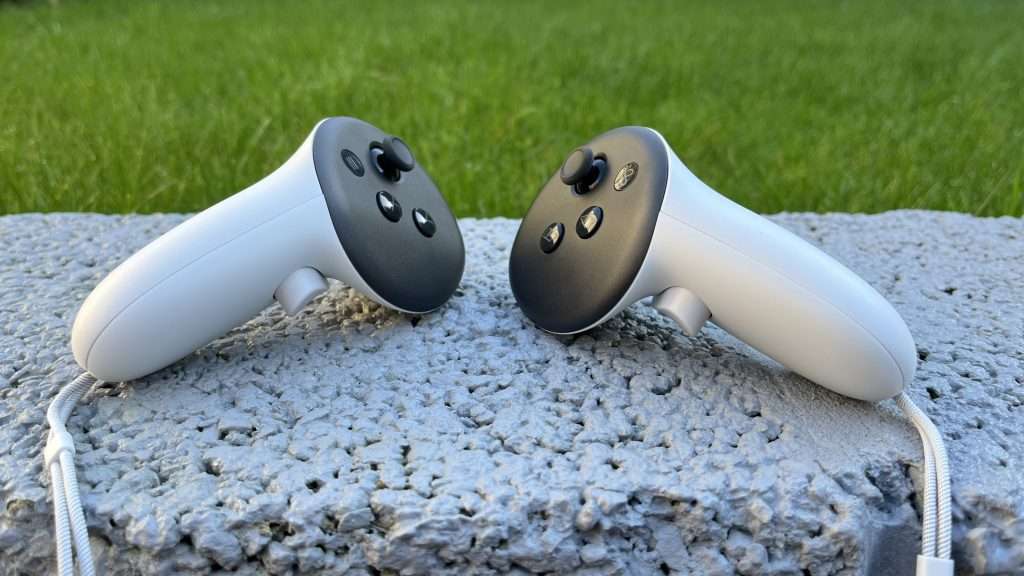
The built-in sensors that detect your thumb on the joysticks and fingers on the triggers make a welcome return, and the TruTouch variable haptics is as good as ever but not quite PS5 DualSense controller level.
For true VR immersion, the hand-tracking feature is an option. While not implemented in games (I didn’t expect it to be), it’s an excellent addition if you’re roaming around menus, scrolling through websites, or streaming content. That’s a step up from the Quest 2, and it’s all thanks to the colour pass-through tech that works a treat.
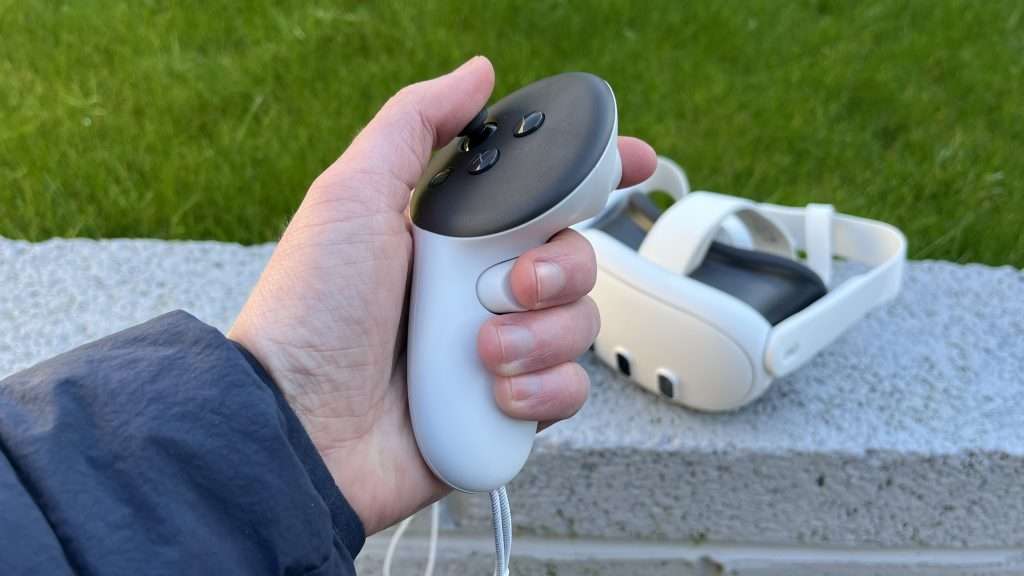
The controllers come with AA batteries in the box. While it can be annoying that they aren’t rechargeable, the batteries last a good while, and it’s good to know I don’t have to charge these every time I want to get stuck into an app or game.
All in all, if it ain’t broke, lose the tracking rings – or something of the like.
Meta Quest 3 Performance
The Meta Quest 3 knocks it out of the park as a standalone VR headset. With a Snapdragon XR2 Gen 2 chipset, 8GB of RAM, 2,064 x 2,208 pixels per eye resolution, and up to a 120Hz refresh rate, this is one powerful headset that works wonders without being tethered.
The Quest 2 already pushed the limits with games like The Walking Dead: Saints & Sinners or Red Matter and apps like (the very barren) Meta Horizon Worlds, but the Quest 3 dusts off the blurriness and slight clunkiness of these apps to bring a speedy, more detailed experience to everything the headset has to offer.
Being able to strap on the Quest 3 and jump into a visually astounding game or app is par for the course, which says a lot about a wireless VR headset. For example, booting up Asgard’s Wrath 2, an open-world action RPG with decent graphics and over 100 hours of gameplay, is a flabbergasting experience, knowing that I didn’t need a PC or console to back up its performance. That said, I did experience a few hiccups, such as frame rate stutters and a couple of crashes. Otherwise, it works great.

As great as its standalone capabilities are, it can’t match what we see on portable devices like gaming laptops or the Lenovo Legion Go. That’s where the PC VR features come in. Whether you use the capable Wireless Air Link (if you have Wi-Fi 6 or greater) or USB-C to USB-C to connect to a PC, you’ll be able to play PC VR games without any trouble. That means you’ll be able to play Half-Life: Alyx and more if you have a VR-ready PC.
It’s the best of both worlds; the Meta Quest 3 may not have the crazy 4896 x 2448 pixels per eye resolution of the HTC Vive Pro 2, but being able to have the ability to use this comfortably as a standalone headset and a capable PC VR platform is more than worth the price point.
Meta Quest 3 Games and Apps
If there’s one thing the Meta Quest 3 does well, it’s games. The company may strive to bring social media or work apps like WhatsApp, Messenger, or even Microsoft Excel into the fold, but most users are here for the games.
The good news is this is the headset to get if you’re after some of the best VR gaming experiences around, like the aforementioned Asgard’s Wrath 2, Red Matter 2, Pistol Whip, Roblox, or anything in between. Even fitness apps like Les Mills Bodycombat, FitnXR, or Supernatural are a triumph. If you’re after a revolutionary work experience, you’ll have to wait a few years (even the Apple Vision Pro struggles with this).
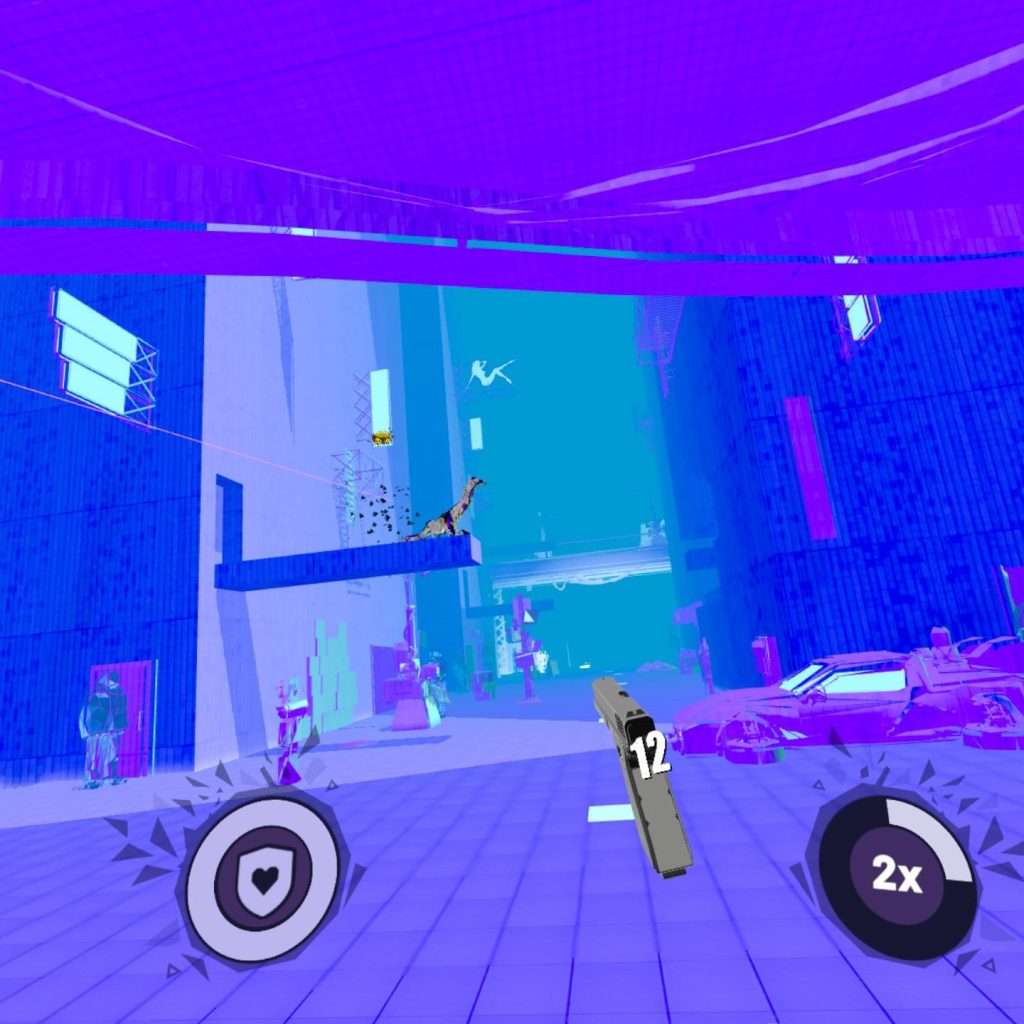
The new suite of titles to make the Quest 3 shine is admirable, like Assasin’s Creed Nexus, Arizona Sunshine 2, and Red Matter 2. These are system sellers for good reason, and I hope Meta continues to bring other IPs like these to its suite of apps. There are over 500 games to check out, many of which take advantage of the Quest 3’s capabilities.
When it comes to AR/MR content, though, the field is relatively sparse. I tried the free game First Encounters to test its features, and while it was a fun experience, it left me feeling shallow. Sure, there’s the D&D-style Demeo, PianoVision, and Vermillion for painting, but these only appeal to a niche group upon an even more select group of VR users.
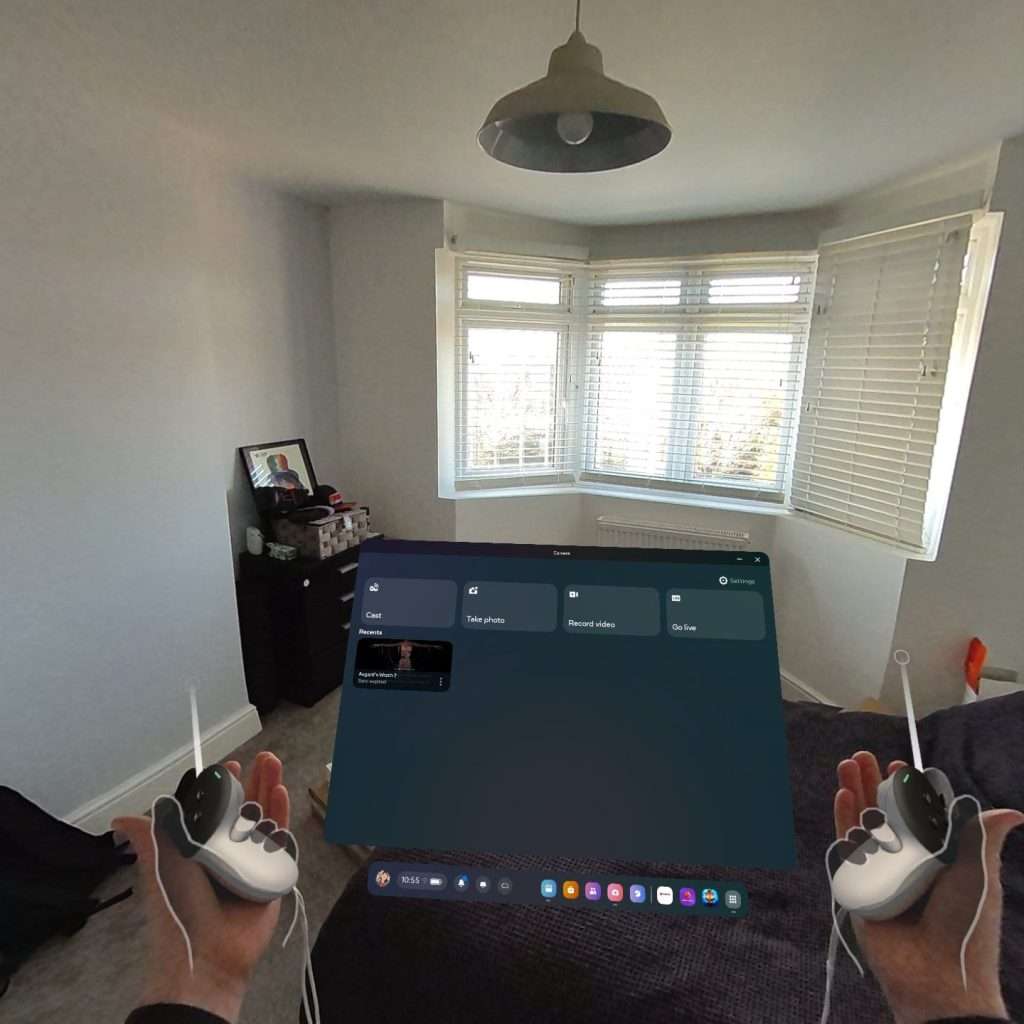
Jumping into Meta Horizon Worlds and all its events, I saw no one in those experiences. Not great for what Meta is trying to push out, but other social apps like Roblox (booming with younger individuals in my experience) and VRChat had plenty of various folk of all ages talking.
If Meta sticks with gaming-focused apps in the long run (leave the reality-breaking apps for a future date), the Quest 3 is a system that will shine.
Meta Quest 3 Battery
Like the Quest 2, the Quest 3 can only last two to three hours before needing a charge. While impressive with certain large-scale games, this is still a downer for many looking for a longer VR session.
The 18W power adapter in the box takes just over two hours to charge. This isn’t ideal in between sessions, and it won’t charge even if you’re tethered to a PC (although it will last a little longer). When playing Asgard’s Wrath 2, I got just under two hours of battery life before needing to plug in and wait.
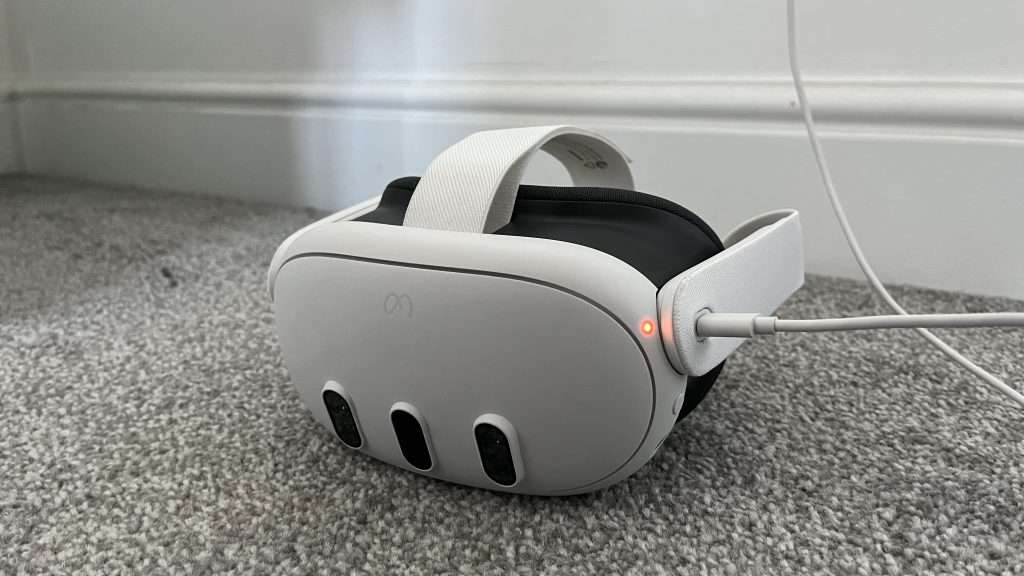
I realise the pressure the Quest 3 must handle, especially since it’s powered by its lonesome, but short battery life takes me out of the experience. Of course, you can get the Elite strap with battery for $129 / £129 for an extra two hours, but that’s quite the cost for a couple of more hours.
While two hours is fine, many (like myself) who want to really delve into VR need more time before they need to set it aside. Still, from what I was able to experience (from 3 hours of media and 2 hours of gaming), it’s not the worst.
Should you buy the Meta Quest 3?
A big issue I had with the Quest 2 was that there wasn’t anything to keep me coming back. Meta had some great games, and some apps were interesting. Still, the overall display quality, graphics, and comfortableness compared to modern laptops and consoles had me leaving the headset picking up dust.
The Meta Quest 3 changes that. Several months in, I keep wanting to dive back into quality titles like Asgard’s Wrath 2, see the extent of its pass-through capabilities by watching videos while cooking, and use it as a way to keep fit.
Meta aims to keep pushing its Quest line-up as more than just a virtual reality, and now mixed reality, platform by adding streaming, social, and work apps. However, it just isn’t there yet. That’s fine, though. Many who want to give VR a try want to blast goons or chat with virtual personas – and the Quest 3 delivers that quality at its highest.
If you’re looking for a premium VR experience, especially if you aren’t looking to buy any other high-level tech, the Meta Quest 3 is the one to get.
